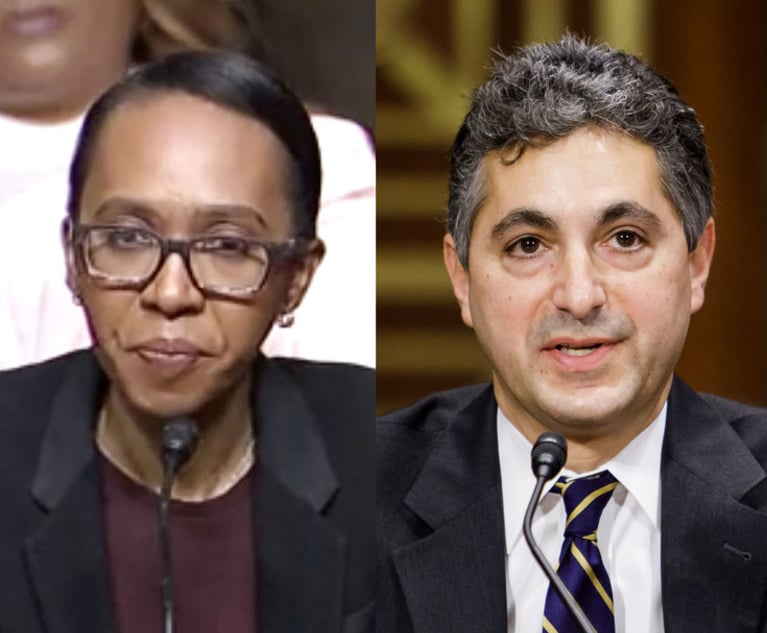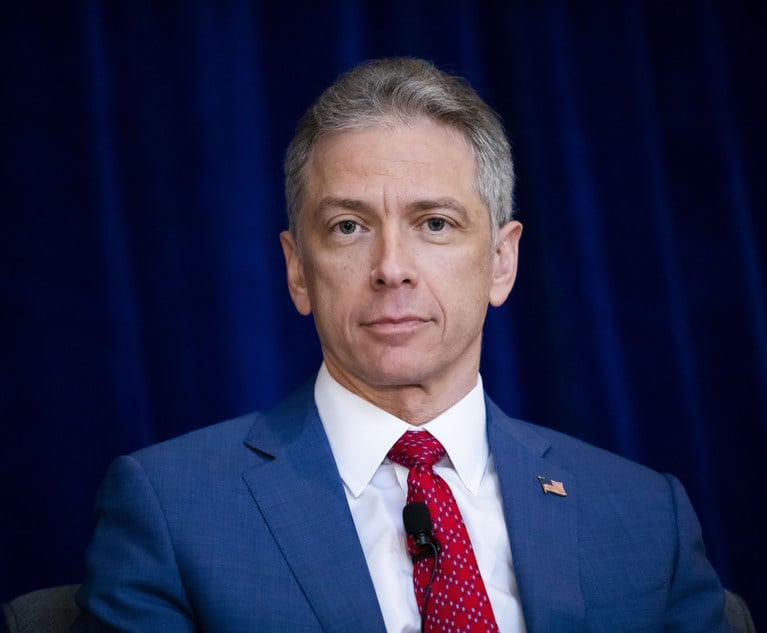Skilled in the Art: Zombie IP: Patents Declared Unenforceable 12 Years Ago Are Brought Back to Life + PTAB Says RideApp Patent Claims Are Too Fuzzy
Flachsbart & Greenspoon has awakened 23-year-old patents from the dead.
July 23, 2019 at 10:07 PM
10 minute read
Welcome to Skilled in the Art. I'm Law.com IP reporter Scott Graham. Today I'm trying to hit for the patent cycle with news from the PTO, the PTAB, district court and the Federal Circuit. Specifically, I'm looking at:
• A Delaware decision that revives patents long ago declared unenforceable for inequitable conduct.
• A PTAB ruling involving the professor who claims to have patented Lyft's and Uber's ride-hailing techniques in the early 2000s.
• A Federal Circuit decision that figures to make replacement car parts more expensive.
• The PTO's commemoration of Apollo 11 and the IP that made it possible.
As always, you can email me your own thoughts and follow me on Twitter.
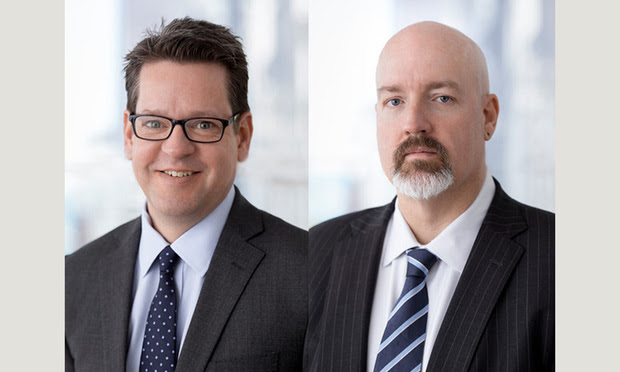 Jonathan Hill (left) and Wil Flachsbart of Flachsbart & Greenspoon.
Jonathan Hill (left) and Wil Flachsbart of Flachsbart & Greenspoon.
These Patent Unenforceable? That's So 2006.
Flachsbart & Greenspoon has awakened 23-year-old patents from the dead.
U.S. District Judge Richard Andrews ruled earlier this month that three lighting ballast patents that were ruled unenforceable due to inequitable conduct in the early 2000s may now be asserted once more against the Osram Sylvania company.
“The law governing inequitable conduct has shifted dramatically in the time between Plaintiff's earlier actions and this lawsuit,” Andrews wrote in turning away Osram's motion to dismiss earlier this month.
The patents were assigned to Norwegian inventor Ole Nilssen way back in the late 1990s and early 2000s. He brought a series of suits from 2000 to 2004 against Osram, Walmart and others, alleging that most any compact fluorescent lights that fit in household lamp sockets infringed his patents. Or as Osram's attorneys at Goodwin Procter and Shaw Keller put it now, Nilssen “waged an all-out litigation war against the lighting industry” based on patents that were “fraudulently obtained.”
U.S. District Judge John Darrah of Chicago agreed, finding back then that Nilssen had committed inequitable conduct. Nilssen had paid the PTO the lower, small-entity application and maintenance fees when, as the named inventor on more than 240 patents, he should have paid the large-entity rate. He also improperly claimed priority to patents from 1978, and he failed to disclose known prior art and litigation involving the same subject matter. Darrah found that Nilssen, who prosecuted the patents pro se, was not credible and had intended to deceive the patent office. He found the case was “exceptional” and awarded Osram its fees.
“Lights Our for Prolific Pro Se CFL Inventor,” one headline at the time declared. The Federal Circuit affirmed the judgments.
Cases closed, right?
Well, Nilssen and Darrah have passed on. Nilssen's widow sold the patents to Beacon Capital, which in turn assigned them to an LLC called CFL Technologies. And the Federal Circuit in 2011 issued Therasense v. Becton Dickinson, an en banc decision that raised the standard for proving inequitable conduct.
CFL, represented by Flachsbart partners Jonathan Hill, Wil Flachsbart and Rob Greenspoon plus local counsel Phillips, Goldman, McLaughlin & Hall, sued Osram last fall. They argued that while Nilssen might have been guilty of questionable behavior at the patent office, none of it was a difference maker on getting the patents allowed. “Nowhere do defendants begin to explain how any patent claim at issue somehow would not have issued in the absence of the scrutinized conduct,” CFL argued in briefs filed to Andrews.
Andrews agreed. “A series of immaterial or unintentional improper actions during patent prosecution, without more, does not amount to inequitable conduct” after Therasense, he wrote.
And even though the judgments against Nilssen were final, the Federal Circuit clarified last year that final judgments are not preclusive on subsequent litigation if there's been an intervening change in the law, Andrews held.
There was one silver lining for Osram: Willful misconduct is off the table. Given the past multiple, federal court findings in Osram's favor, Andrews wrote, the idea that it acted “egregiously” by continuing to practice the patents is “not plausible.”
 Photo by Shutterstock.
Photo by Shutterstock.
PTAB Calls Ride-Sharing Patent Indefinite
I've got one paragraph of good news for RideApp and the retired Georgia Tech professor who says he patented the idea of ride-sharing-by-cellphone 19 years ago:
The Patent Trial and Appeal Board declined to institute an IPR by Unified Patentsthat challenged his patent's validity. Now it looks as if RideApp will get its day in court against Lyft in San Francisco and against Uber Technologies in Georgia.
The rest of the news is decidedly bad. That's because the reason the PTAB judges turned away Unified's challenge is … they found the challenged patent claims to be indefinite.
The patent describes “a wireless means of on-demand allocation of a passenger to a specific vehicle through [a] central data system.” The board found that the claim specification doesn't explain how passenger “allocation” is performed. RideApp pointed to a few flow charts, but the board found they weren't satisfactory.
The PTAB isn't empowered in IPRs to invalidate claims for indefiniteness. And because the claims are indefinite, the board can't decide if they're anticipated or obvious. “We are unable to apply the claim language to the prior art,” Judge Jason Melvin wrote in his July 17 order. So the IPR is over.
RideApp is facing another IPR filed by Lyft in February. Assuming that goes the same way, the next hurdle facing RideApp will be a Section 101 motion that Lyft has filed in San Francisco and that also turns largely on the meaning of “allocation.”
Brent Babcock, a PTAB specialist at Womble Bond Dickinson who's not involved in the cases, notes that patent eligibility is a different analysis from indefiniteness. But if RideApp survives the 101 motion and makes it to claim construction and summary judgment, it will then have some serious explaining to do about indefiniteness.
“You'd be getting out your microscope and looking over the specification real carefully to point out where the PTAB was wrong,” Babcock said. While the PTAB's claim construction isn't binding on district judges, a good faith explanation of how the board erred would be critical for success. (And, I would add, for avoiding the possibility of a fee award.)
“If it's just, 'That's just the board and their decision isn't binding on you, judge,'” that may not cut it, Babcock said, especially now that the PTAB and district courts are using the same claim construction standard.
Unified was represented by Haynes & Boone and by Unified in-house attorneys Jonathan Bowser and Ashraf Fawzy. RideApp was represented by Kasowitz Benson Torres, which also represents RideApp in San Francisco federal court. Kilpatrick Townsend & Stockton represents RideApp in Georgia federal court. Baker Botts represents Lyft at both the PTAB and in San Francisco federal court. No attorney has noticed an appearance yet for Uber in Georgia.
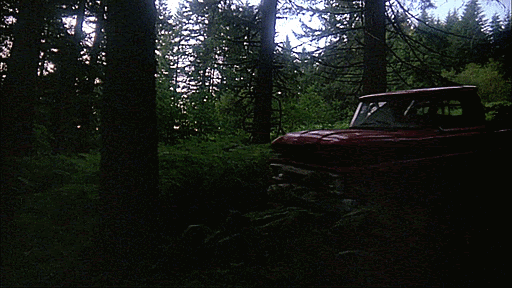
Design Patents Could Limit Replacement Auto Parts
Auto makers may be gnashing their teeth about paying license fees for standard-essential patents that connect cars to the internet. But look on the bright side: They now might recoup some of those IP costs by using design patents to exclude replacement auto parts from the market.
The Federal Circuit on Tuesday turned away a replacement part trade group's bid to limit the reach of design patents on hoods, headlamps and other parts that serve both a functional and ornamental purpose.
The upshot of Automotive Body Parts Association v. Ford Global Technologies is that if consumers need replacement hoods or headlamps that look exactly like the one on an F-150, they would either have to buy from Ford or from parts makers who have paid a license. The decision was issued under seal earlier this month and made public Tuesday.
ABPA had argued that design considerations for replacement parts are primarily functional in nature and therefore not subject to design patents. “The only role that design plays in an owner's decision to buy such a part is that the design must match the design of the original part to return the vehicle back to its original condition and appearance,” ABPA's attorney, Robert Oake Jr. of Oake Law Office had argued in briefs to the court.
Alternatively, he argued that the original sale of the F-150 should exhaust Ford's design patent rights.
The Federal Circuit disagreed on both counts Wednesday. “We hold that, even in this context of a consumer preference for a particular design to match other parts of a whole, the aesthetic appeal of a design to consumers is inadequate to render that design functional,” Judge Kara Stoll of the U.S. Court of Appeals for the Federal Circuit wrote for a unanimous panel.
Judges Alvin Schall and Todd Hughes concurred.
ABPA had tried to analogize to a case in which the Federal Circuit held that a design patent on a key blade was unpatentable. “That was done in an effort to control the market for replacement keys, just like Ford is trying to control the market for repair parts,” Oake told the court at a January hearing.
“But that's the consequence of getting a patent on something,” Hughes had replied. “If it's patented, other people can't make or manufacture or sell it, absent a license.”
In Tuesday's opinion, Stoll wrote that the key blade case turned on the fact that no alternatively designed blade would mechanically operate the lock—“not that the blade and lock were aesthetically compatible.” Plenty of alternative headlamp and hood designs will fit Ford's trucks, even if they don't look exactly like the original.
As for exhaustion, that covers only the parts sold with the original truck, not replacements. ABPA had asked the Federal Circuit to modify that rule for design patents, but Stoll declined. “Our precedents do not differentiate transactions involving embodiments of patented designs from those involving patented processes or methods,” she noted.
Hogan Lovells partner Jessica Ellsworth had the winning argument for Ford Global Technologies. At the January hearing she had analogized to a Federal Circuit case involving design patents on surgical instruments. “The fact that doctors may prefer a certain arrangement of the buttons and the setup of that surgical instrument doesn't make it functional if in fact other designs serve the exact same useful purpose,” she told the court. “And that, I think, puts an end to what the ABPA is arguing here.”
Mauris vitae ultricies leo integer malesuada nunc vel risus. Semper feugiat nibh sed pulvinar proin gravida. Ut ornare lectus sit amet est placerat in egestas erat. Fermentum iaculis eu non diam phasellus vestibulum lorem sed. Ultricies lacus sed turpis tincidunt id aliquet risus feugiat in. Auctor augue mauris augue neque gravida in fermentum et.
That's One Small Step for a Patent …
The USPTO celebrated the 50th anniversary of Apollo 11 this week by observing the role of intellectual property in space commerce. Space Shuttle astronauts Kathryn Sullivan and Paul Richards were scheduled to join Commerce Secretary Wilbur Ross, PTO Director Andrei Iancu and NASA Administrator Jim Bridenstine at PTO headquarters in Alexandria earlier today.
“It took fewer than 70 years to get from the Wright Brothers' first patent for controlled flight to Neil Armstrong's 'giant leap for mankind,'” Iancu said in a statement ahead of the event. “Our intellectual property (IP) system not only helped to make this possible, it continues to promote and protect stunning advances in every field of human endeavor.”
That's all from Skilled in the Art this week. I'll see you all again on Friday.
This content has been archived. It is available through our partners, LexisNexis® and Bloomberg Law.
To view this content, please continue to their sites.
Not a Lexis Subscriber?
Subscribe Now
Not a Bloomberg Law Subscriber?
Subscribe Now
NOT FOR REPRINT
© 2025 ALM Global, LLC, All Rights Reserved. Request academic re-use from www.copyright.com. All other uses, submit a request to [email protected]. For more information visit Asset & Logo Licensing.
You Might Like
View All
Skilled in the Art With Scott Graham: I'm So Glad We Had This Time Together
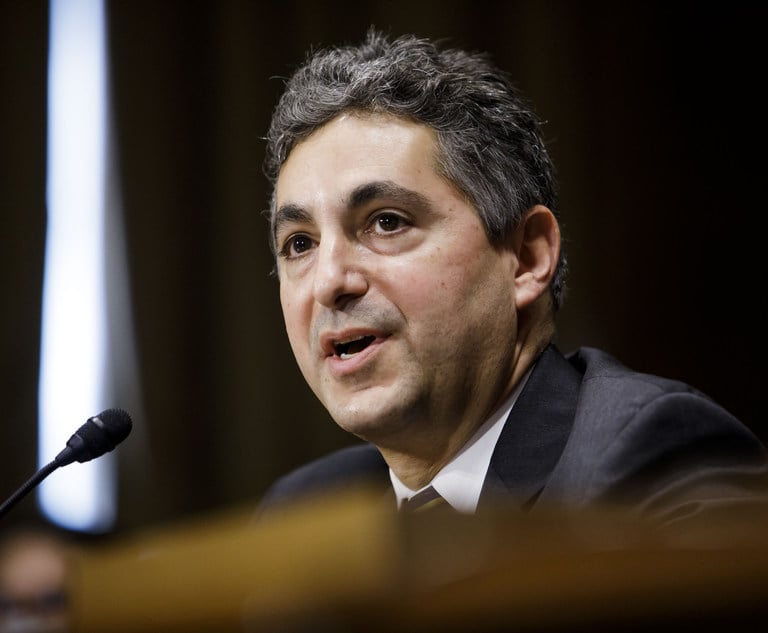
Design Patent Appeal Splinters Federal Circuit Panel + Susman Scores $163M Jury Verdict + Finnegan Protects Under Armour's House
Trending Stories
- 1New York State Authorizes Stand-Alone Business Interruption Insurance Policies
- 2Buyer Beware: Continuity of Coverage in Legal Malpractice Insurance
- 3‘Listen, Listen, Listen’: Some Practice Tips From Judges in the Oakland Federal Courthouse
- 4BCLP Joins Saudi Legal Market with Plans to Open Two Offices
- 5White & Case Crosses $4M in PEP, $3B in Revenue in 'Breakthrough Year'
Who Got The Work
J. Brugh Lower of Gibbons has entered an appearance for industrial equipment supplier Devco Corporation in a pending trademark infringement lawsuit. The suit, accusing the defendant of selling knock-off Graco products, was filed Dec. 18 in New Jersey District Court by Rivkin Radler on behalf of Graco Inc. and Graco Minnesota. The case, assigned to U.S. District Judge Zahid N. Quraishi, is 3:24-cv-11294, Graco Inc. et al v. Devco Corporation.
Who Got The Work
Rebecca Maller-Stein and Kent A. Yalowitz of Arnold & Porter Kaye Scholer have entered their appearances for Hanaco Venture Capital and its executives, Lior Prosor and David Frankel, in a pending securities lawsuit. The action, filed on Dec. 24 in New York Southern District Court by Zell, Aron & Co. on behalf of Goldeneye Advisors, accuses the defendants of negligently and fraudulently managing the plaintiff's $1 million investment. The case, assigned to U.S. District Judge Vernon S. Broderick, is 1:24-cv-09918, Goldeneye Advisors, LLC v. Hanaco Venture Capital, Ltd. et al.
Who Got The Work
Attorneys from A&O Shearman has stepped in as defense counsel for Toronto-Dominion Bank and other defendants in a pending securities class action. The suit, filed Dec. 11 in New York Southern District Court by Bleichmar Fonti & Auld, accuses the defendants of concealing the bank's 'pervasive' deficiencies in regards to its compliance with the Bank Secrecy Act and the quality of its anti-money laundering controls. The case, assigned to U.S. District Judge Arun Subramanian, is 1:24-cv-09445, Gonzalez v. The Toronto-Dominion Bank et al.
Who Got The Work
Crown Castle International, a Pennsylvania company providing shared communications infrastructure, has turned to Luke D. Wolf of Gordon Rees Scully Mansukhani to fend off a pending breach-of-contract lawsuit. The court action, filed Nov. 25 in Michigan Eastern District Court by Hooper Hathaway PC on behalf of The Town Residences LLC, accuses Crown Castle of failing to transfer approximately $30,000 in utility payments from T-Mobile in breach of a roof-top lease and assignment agreement. The case, assigned to U.S. District Judge Susan K. Declercq, is 2:24-cv-13131, The Town Residences LLC v. T-Mobile US, Inc. et al.
Who Got The Work
Wilfred P. Coronato and Daniel M. Schwartz of McCarter & English have stepped in as defense counsel to Electrolux Home Products Inc. in a pending product liability lawsuit. The court action, filed Nov. 26 in New York Eastern District Court by Poulos Lopiccolo PC and Nagel Rice LLP on behalf of David Stern, alleges that the defendant's refrigerators’ drawers and shelving repeatedly break and fall apart within months after purchase. The case, assigned to U.S. District Judge Joan M. Azrack, is 2:24-cv-08204, Stern v. Electrolux Home Products, Inc.
Featured Firms
Law Offices of Gary Martin Hays & Associates, P.C.
(470) 294-1674
Law Offices of Mark E. Salomone
(857) 444-6468
Smith & Hassler
(713) 739-1250



